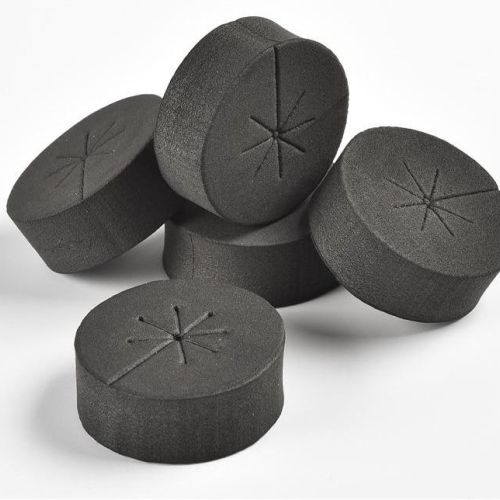Grow Wild Strawberry Plants
Product Type: Bonsai
Cultivating Difficulty: Very Easy
Grow Cycle: Annual
Full-bloom Period: Spring
Climate: Subtropics
Wild strawberry commonly called as Fragaria virginiana (Fragaria vesca), woodland strawberry, Alpine strawberry, Carpathian strawberry, European strawberry, is a herbaceous perennial plant which is a native to North America. It is one of the two species of strawberry that were hybridized to create the modern domesticated strawberry. These are common native plants found growing in open fields, woodlands and even our yards.
Wild strawberries are smaller in size than store-bought strawberries. The store-bought ones are a hybrid of wild strawberry and a European species; the berries are favorite dish to many birds, animals, as well as people. And yes, wild strawberries are not at all poisonous, they are edible. In fact, they are tasty.
Wild strawberries are an excellent addition not only to backyard garden but also to indoor gardens. This tiny, intensely fragrant fruit produces from early spring until fall. It is an easy to grow perennial plant that does not send out runners like standard strawberry plant. Its neat, bounded habit makes an amazing edging plant or groundcover.
Do you know that wild strawberry is not the plant used to produce the strawberries found in super market. These strawberries thrive along sandy soils near lakes and oceans.
Even though we call them “berries”, the strawberry that we eat has an intriguing structure that is not a true botanical berry. In the center of the flower, rounded core structure known as ovaries, which when pollinated by bees, develop into many tiny fruits called achenes. To the human eye, these achenes look like that tiny yellow seeds or specks on the strawberry fruits. The redness and flesh or pulp of the fruit is the result of the tissues that held the ovary swelling, ripening and fusing to the ovary next to it, which in turn creates a succulent, juicy mass we are familiar with.
Because of its strong flavor, wild strawberry is grown for domestic use as a major ingredient for jam, sauces, liqueurs, cosmetics and alternative medicine.
GENERAL INFORMATION ABOUT WILD STRAWBERRY:
- Scientifically called: Fragaria vesca
- Commonly called: Alpine strawberry
- Planting time: Spring
- Blooming time: Early spring through fall.
- Habitat: Meadows, Woodland edges
SCIENTIFIC INFORMATION:
- Kingdom: Plantae
- Division: Magnoliophyte
- Class: Magnoliopsida
- Order: Rosales
- Family: Rosaceae
- Genus Fragaria
- Species: vesca
Like regular strawberry plant, they have dark green, trifoliate leaves and white, five-petaled flowers with yellow center. There is also a variety of wild strawberry with sweet yellow fruits.
The wild strawberry is a producer. It uses photosynthesis to convert sun’s energy into glucose. It also causes conversion of carbon-di-oxide to oxygen, which is important for all organisms. Also, many types of wildlife eat its central portion of flower, which is also known as receptacle.
HEALTH BENEFITS OF WILD STRAWBERRIES
Eaten since the stone age, wild strawberries are known to help the nervous system, fight fatigue, and crack down or skin aging. Ever since ancient times, all parts of wild strawberry have been used as herbal medicine.
- The leaves and roots have been used since ages in herbal teas to improve bile and liver function, to treat inflammation of the bowel and the berries are also preferred as a medicine for diuretic and an herbal remedy for gout.
- Humans can use plants leaves for medicinal purposes, or eat its receptacle, which is a food source.
- Tea from wild strawberry’s dried leaves is used to treat dysentery.
- Carl Linnaeus, a Swedish botanist, physician and zoologist, believed that the berries could dissolve tartar and that they were the best medicine for kidney gravel stones and gout.
- Sebastian Kneipp, a German naturopath and priest, recommended wild strawberry tea as a remedy for summer colds, as well as ailments related to liver.
- In the 17th century, it was apparently common to treat slow healing wounds with strawberry juice mixed with salt.
- In the past, that herb was regarded as an excellent remedy against chilblains, by washing the hands frequently with the crushed berries.
- Using berries as herbal medicine is not much common today but the berries are often used in conjunction with other medicinal herbs in so-called blood-purifying teas.
- In addition, the berries have also been used as an herbal remedy for gout, arthritis, throat inflammation and kidney disease. They are also thought to improve digestion and acta as general tonic.
- This one is especially for all the gorgeous ladies and pretty girls in the world. The berries have also been used cosmetically in skin care creams to restore and strengthen the skin, reduce wrinkles, bleach freckles relieve sunburns.
- Since the fruit is rich in iron and potassium, they can be a good for anemic person.
- An herbal tea made from the leaves has been used internally to relief diarrhea, gastroenteritis, ailments of the urinary tract and hemorrhoids.
- The tea has also been used as a gargle to relief mouth ulcers and externally to treat minor burns, cuts and scrapes.
GROWING WILD STRAWBERRIES INDOORS
Strawberry is one of the sweetest; most cherished and loved fruits in the world. You can grow sweet strawberries all year around. Wild strawberry is super-easy to grow. In fact, strawberry plant is ideal for a container like hanging basket because they grow as well in containers as they do when planted on ground.
Fruit plants are considered to be the one of the difficult options for hydroponics beginners. This largely due to input requirements, and higher maintenance and care involved. But strawberries are quite an exception to this rule; as they are easy to grow. They flourish in hydroponic growth systems and can produce large amounts of fresh fruit all through the year.
Runners are preferred option for propagating strawberries, especially in hydroponics. Stems from matured strawberry plants are harvested, their roots are allowed to grow. They are then chilled and stored. These frozen runners are usually available in market. That can be used to grow inside.
In short, if you want to get all the benefits associated with Wild Strawberry, grow them in your home using WILD STRAWBERRY PLANT SEEDS. These are readily available plants which require very little maintenance and will provide you fresh and healthy strawberries all year.
PLANT CARE
Now you will be thinking that how to care for this plant. This quite simple.
- These plants will start sprouting in 1-2 weeks after being put in a growing medium. If multiple seeds germinate very close, leave up to two seedlings to grow per square-inch. This enables proper space and nutrients for the plants to grow.
- In the next 4-8 weeks span, they will be grown full in size. Once your plant is flowering it needs to be pollinated by hand. You can do this by gently shaking your plant to carry pollen from one blossom to next. Or you can simply use a small, relatively soft makeup brush, gently brush the pollen from stamen to the pistil and do this from flower to flower. Be sure to cover entire pistil, else you can end-up with partially pollinated strawberry.
- Once your plant started bearing fruits, you can enjoy the fruit season for next 8-17 weeks. Just make sure once your plant has given first harvest, trim old leaves and fruit stem from the bottom of the stem. New green leaves and flowers will emerge soon.
More About Herboponics
Our herboponics system is versatile and allows you to grow a wide variety of plants, including herbs like basil, mint, and thyme, as well as vegetables like lettuce, tomatoes, and peppers. You can also experiment with exotic plants and flowers. The system is designed to provide the ideal conditions for diverse plant types, maximizing their growth and health.










Reviews
There are no reviews yet.